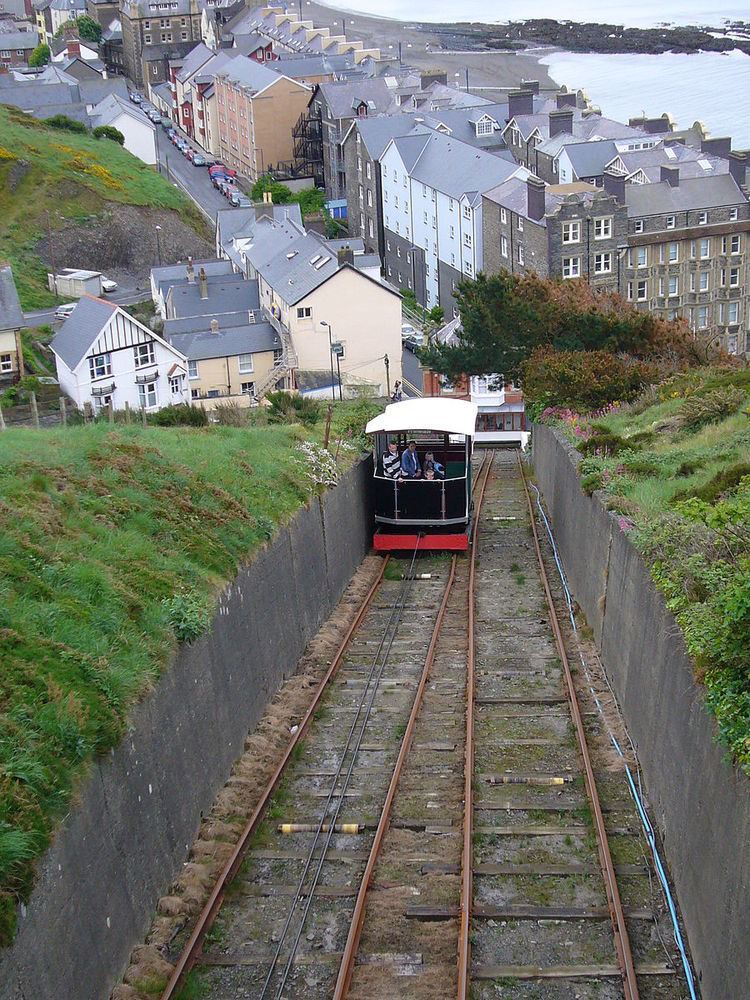Began operation 1 August 1896 System length 237 m Transit type Funicular | Phone +44 1970 617642 Number of stations 2 | |
 | ||
Track gauge 1,435 mm (4 ft 8 ⁄2 in) Address Cliff Terrace, Aberystwyth SY23 2DN, UK Hours Open today · 10AM–4PMTuesday10AM–4PMWednesday10AM–4PMThursday10AM–4PMFriday10AM–4PMSaturdayClosedSundayClosedMonday10AM–4PM Similar Vale of Rheidol Railway, Aberystwyth Castle, The Magic of Life Butterfly, Hafod Uchtryd, Devil's Bridge - Ceredigion | ||
A ride on the aberystwyth cliff railway 05 04 2016
The Aberystwyth Cliff Railway (Welsh: Rheilffordd y Graig) opened on 1 August 1896. It is a funicular railway in Aberystwyth, Ceredigion, Wales, having a length of 778 feet (237 m). It was the longest funicular railway in the British Isles until 2001, when the Cairngorm Mountain Railway opened.
Contents
- A ride on the aberystwyth cliff railway 05 04 2016
- A ride on the aberystwyth cliff railway 20 8 14
- Development
- Operations
- Appearance in music and literature
- References
A ride on the aberystwyth cliff railway 20 8 14
Development
The railway is part of Constitution Hill, a Victorian development on the hill of the same name built by the Aberystwyth Improvement Company, and form of early theme park. It consisted of arcades and a restaurant at the foot of the hill, the railway, and at the top of the hill a camera obscura and park. Constitution Hill was designed and engineered by George Croydon Marks, who later became a Labour peer, who at the same time designed the new pavilion for the Royal Pier.
As part of Constitution Hill, Croydon-Marks designed into the development a meandering footpath as an alternative route. To allow this to pass over the railway on a footbridge, in the midsection 12,000 tonnes of rock were excavated to provide the railway with a lower path.
Operations
Originally operated on a water balance system, it was electrified in 1921. The Standard Gauge railway climbs 430 feet (130 m) in 778 feet (237 m) — a gradient steeper than 1:2 (50%). Its twin carriages, which both take 30 passengers, are named the Lord Geraint and the Lord Marks.
Appearance in music and literature
The railway makes appearances in the work of Malcolm Pryce.
